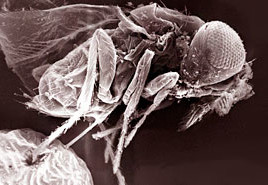Extreme climatic events could influence the sex ratio of a parasite that controls pests such as the European corn borer, a new study shows. The parasitic wasp Trichogramma euproctidis lays its eggs inside the eggs of moths, preventing the moth egg from hatching into a caterpillar. The study showed that fewer females were born at […]
Tag: biology
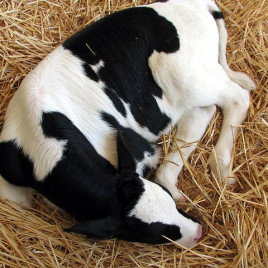
Calves are ‘pessimistic’ after separation from their mother
Dairy calves exhibited ‘pessimistic’ behaviour after they were separated from their mother, a new study shows. Thirteen Holstein calves were raised with their dams and trained to discriminate between white (reward) and red (punishment) colours displayed on a computer monitor. They were then tested using an ambiguous colour (between white and red): 72% of calves […]
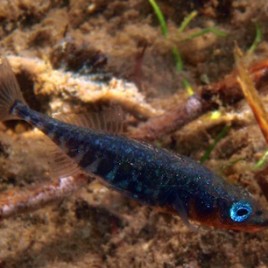
Sticklebacks are blind to each other’s armour
Different-looking sticklebacks from Kennedy Lake on Vancouver island interbreed despite evolutionary pressure not to, according to a new study. Genetic studies showed that fish with one parent that had lots of body armour and another parent with minimal body armour had a lower chance of surviving to adulthood than fish whose parents were both of […]
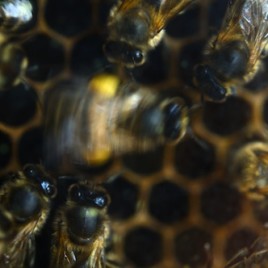
Honey bee eavesdropping could assess conservation efforts
The famous ‘waggle dance’ that bees use to tell each other about the best foraging grounds could be used to measure the success of conservation programs, according to new research. Scientists ‘eavesdropped’ on 5,484 bee dances in a mixed urban-rural area and found that the best forage was located in a particular nearby nature reserve, […]
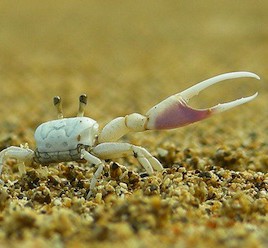
How baby fiddler crabs catch a wave
A new study shows how some species of fiddler crabs can compensate for changing temperatures when timing their courtship. Fiddler crabs sync up the hatching of their young with bimonthly higher tides in order to ensure they have the best chance of escaping predators. But at some times of year, cold temperatures can slow embryo […]
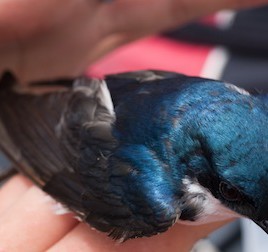
Tree swallows in Quebec in decline
A new study shows that tree swallows between Montreal and Sherbrooke became fewer (-19% population decline) and smaller (-8% weight loss) from 2005-2011, especially the females. Insect-eating birds are in decline all across northeastern North America, and pesticide use is a suspected culprit, but the authors did not find a link between weight loss and […]
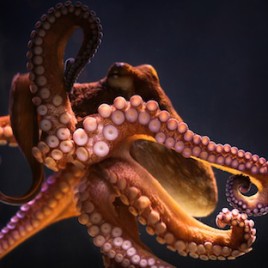
Why don’t octopuses tie themselves up in knots?
New research indicates that octopus skin exudes a chemical substance that repels its own suckers. Octopus arms – which remain alive for up to an hour after amputation – do not grab octopus skin or objects covered in octopus skin, although they will grab skinned octopus parts. This suggests a chemical repulsion, though the researchers […]
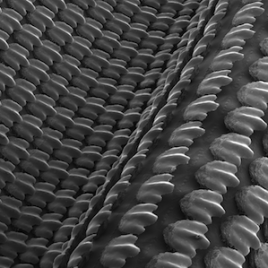
Researchers create artificial shark skin
A new ultra-realistic 3D model of shark skin could help humans mimic its speed-boosting properties. Researchers used micro-CT scanners to create a detailed computer model of the skin of a mako shark – which is covered in tooth-like scales called denticles – and then printed their own version using a 3D printer. Experiments showed that the […]
Blood test predicts premature birth
Researchers have created a new blood test that helps predict whether a pregnant woman is likely to go into labour prematurely. Currently, many of the women admitted to hospital with signs of premature labour do not end up giving birth within ten days. The new test examines blood for signs of the expression of certain genes, […]
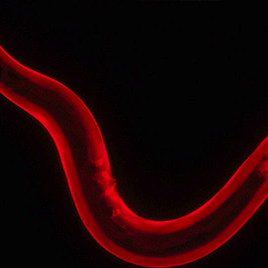
Cell aging theory turned upside down
A new study shows that raising the level of free radicals in the nematode worm C. elegans actually increases its lifespan, contrary to popular belief. Free radicals are the reactive molecules that sometimes damage DNA and the ones that antioxidants are supposed to fight against – could in some cases help us live longer. The authors show […]
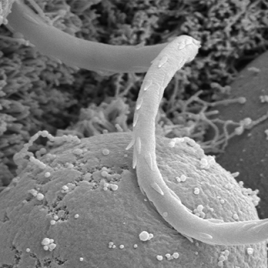
How a harmless alga became a lethal parasite
A new genomics study shows how a free-living, photosynthetic alga – that is, a type of green pond scum – evolved into an insect parasite that kills juvenile blackflies, caterpillars, beetles and mosquitoes. The sequenced genome of Helicosporidium shows that it kept nearly all its genes except those required for photosynthesis when it made the […]
New DNA barcoding method speeds up species identification
A new DNA barcoding method will save money and time for researchers who wants to assess biodiversity in an ecosystem. The new method allowed researchers to correctly identify 92% of the 1,066 insects and spiders in a single analysis. They also were able to detect microbes associated with the insects and spiders. Previous […]
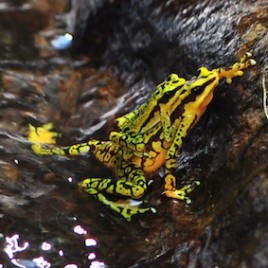
Will a deadly fungus wipe out frogs in your area?
Batrachochytrium dendrobatidis is a fungus that causes a deadly skin disease in frogs and other amphibians, and is one of the factors contributing to the global decline of amphibians. A new mathematical model shows that the reproduction quotient – that is, the average number of new spores produced by an initial spore over its lifetime […]
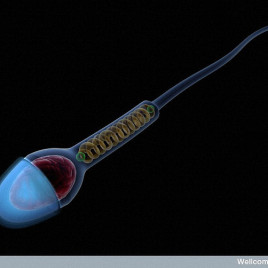
Towards stem cell therapy for infertile men
Researchers have created sperm cells from infertile men who could not produce healthy sperm them on their own. They did this by converting skin cells into stem cells, which then became fertile human sperm cells when transplanted into the testicles of mice. This opens up the possibility of clinical cell-based therapy that could make infertile […]
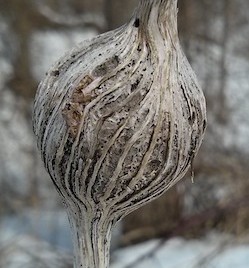
Fluid fats fuel frozen flies
New research shows that gall fly larvae produce a special form of fat that remains liquid at very low temperatures, up to -80 °C. Gall flies have some of the best cold tolerance in the animal kingdom. They spend the winter inside lumps of plant tissue called galls. While the new discovery could help explain […]
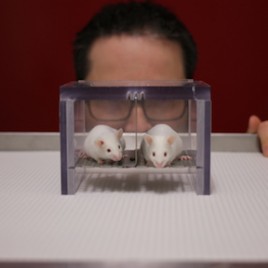
‘Scent of man’ stresses lab mice out 
A new study shows that the behaviour of mice used in scientific experiments was altered by the presence of men, but not women. The study shows that in the presence of male experimenters and male odours, mice were less sensitive to pain, a phenomenon called stress-induced analgesia. Lab mice are more stressed when the […]
